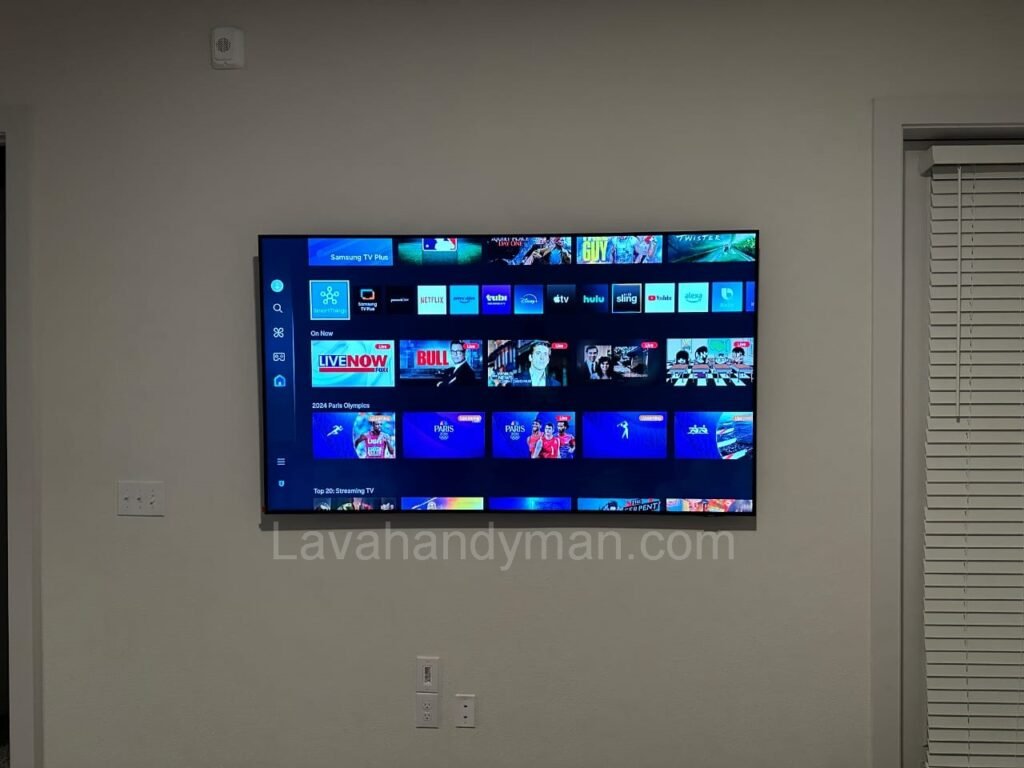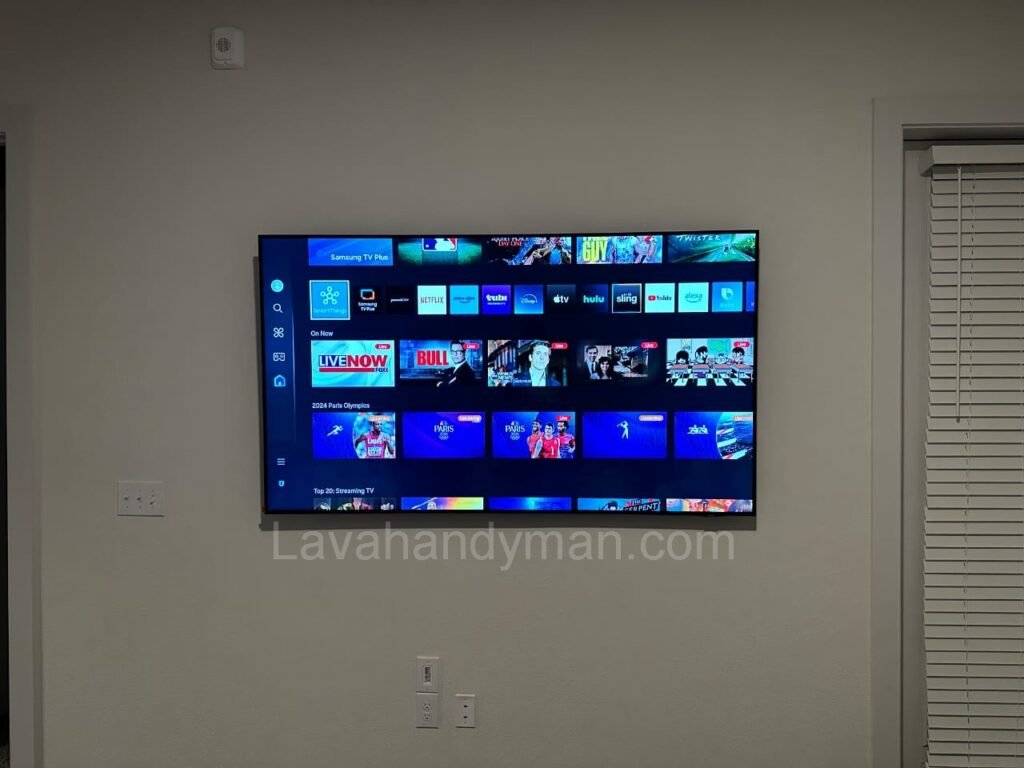Tilting Mount: A Comprehensive Guide
Introduction
With the advancement of technology and the widespread use of flat-screen TVs, wall mounting has become a popular choice. Among various mounting options, the tilting mount stands out as one of the most widely used types. It allows for vertical angle adjustment, giving users more flexibility in viewing angles. This article provides a complete overview of the tilting mount, covering its features, pros and cons, applications, installation, and technical tips.
1. What Is a Tilting Mount and How Does It Work?
A tilting mount is a wall bracket designed to support a TV or display screen with the added ability to adjust the vertical tilt angle. Unlike fixed mounts that offer no movement, tilting mounts enable the screen to tilt up or down, improving the viewer’s comfort and image clarity.
Key Components:
- Wall Plate: Attaches to the wall and supports the entire system’s weight.
- Mounting Arms: Connect to the back of the TV and latch onto the wall plate.
- Tilt Mechanism: A mechanical or spring-based system that allows the screen to tilt.
- Safety Locks and Screws: Secure the screen in place after angle adjustment.
Tilting Mount: A Comprehensive Guide

2. Advantages of a Tilting Mount
2.1 Better Viewing Angles
One of the key benefits of tilting mounts is the ability to optimize the viewing angle. If the TV is mounted higher than eye level (e.g., above a fireplace), tilting it downward ensures a direct line of sight, reducing neck strain.
2.2 Reduced Glare
Tilting the screen helps avoid reflections from windows, lights, or other sources, improving visibility in bright rooms.
2.3 Space-Saving
Wall mounting saves floor space and contributes to a more organized and cleaner interior design—especially important in smaller rooms.
2.4 Enhanced Safety
Wall-mounted TVs are less likely to be knocked over, making this setup safer for homes with children or pets.
2.5 Easy Installation and Adjustment
Compared to full-motion mounts, tilting mounts have a simpler design and are generally easier to install and operate.
3. Limitations of Tilting Mounts
3.1 No Horizontal Movement
Unlike full-motion mounts, tilting mounts only allow vertical tilt and do not support left-right swivel or extension.
3.2 Limited Port Access
In some models, close wall proximity may obstruct easy access to HDMI, USB, or power ports.
3.3 Installation Precision Required
Improper alignment during installation may hinder the effectiveness of the tilt feature and degrade the viewing experience.
4. Comparison with Other Mount Types
| Feature | Fixed Mount | Tilting Mount | Full-Motion Mount |
|---|---|---|---|
| Movement | None | Vertical only | Vertical, horizontal, depth |
| Cost | Low | Moderate | High |
| Installation | Simple | Relatively simple | More complex |
| Ideal Use | Eye-level mounting | High mounting or glare control | Large rooms, multiple viewing angles |
5. Common Applications
- Living Rooms with Large Windows: To minimize glare and maximize comfort.
- Fireplace or High Wall Installations: Downward tilt ensures better visibility.
- Bedrooms or Kitchens: Comfortable viewing while sitting or lying down.
- Commercial Environments: Clinics, hotel lobbies, and exhibitions.
6. How to Choose the Right Tilting Mount
6.1 VESA Compatibility
Ensure the mount supports your TV’s VESA standard, which refers to the distance between the four mounting holes on the TV’s back.
6.2 Weight Capacity
The mount should support your TV’s weight. Always check the manufacturer’s maximum load capacity.
6.3 Tilt Range
Some models allow tilt adjustments of 10°, 15°, or even 20°. Choose a mount based on your viewing height.
6.4 Extra Features
- Integrated cable management
- Quick-lock systems
- Corrosion-resistant finish
- Installation tools included
7. Installation Guide
Tools Required:
- Screwdriver or electric drill
- Spirit level or laser level
- Measuring tape
- Screws and wall anchors
Step-by-Step:
- Choose the Wall Location: Consider viewing height and lighting.
- Attach the Wall Plate: Use a level to ensure proper alignment.
- Connect Mounting Arms to TV: Match the VESA pattern and tighten screws.
- Hang the TV on the Wall Plate: Secure it into place.
- Adjust the Tilt Angle: Lock the screen at the desired position.
8. Maintenance and Safety
- Check Screws Periodically: Tighten if necessary.
- Clean with Soft Cloth: Avoid harsh chemicals.
- Inspect Cable Routing: Ensure cables are not bent or pinched.
- Verify Lock Mechanisms: Especially after repositioning.
📺 Diverse Applications of Tilting Mounts
Tilting mounts, with their ability to adjust the vertical viewing angle, are used across a wide range of environments—from residential to commercial, educational, and public spaces. Below is a detailed look at their most common and effective applications:
1. Home Use
- Living Rooms: When TVs are mounted higher than eye level (e.g., above a fireplace), tilting the screen downward helps reduce neck strain and improves comfort.
- Bedrooms: Watching TV while lying in bed becomes much more enjoyable when the screen can be angled for an optimal view.
- Kitchens: With a wall-mounted screen that can tilt, you can follow recipes or enjoy entertainment from different angles while cooking or moving around.

2. Offices and Corporate Settings
- Meeting Rooms: In conference rooms, adjusting the tilt ensures clear visibility of presentations for all attendees, regardless of seating position.
- Waiting Areas: In service offices, tilting screens help display useful information to clients more effectively.
3. Commercial and Retail Environments
- Storefront Displays: TVs used for advertising in windows or high-traffic areas can be tilted toward eye level to maximize visibility and attract attention.
- Exhibition Booths: In trade shows with limited space, tilting mounts help position displays optimally for greater viewer engagement.
4. Public and Service Areas
- Airports and Terminals: Displays for flight or train schedules are often mounted high on walls. Tilting mounts make it easier for travelers to read them clearly.
- Hospitals and Clinics: In waiting rooms or patient areas, screens mounted with tilting brackets ensure the content is easily viewable by everyone.
5. Educational Institutions
- Schools and Universities: Whether in classrooms, auditoriums, or labs, adjustable screen angles enhance visibility and support better learning experiences.
- Training Sessions: In both online and in-person training environments, tilting mounts help make screens clearly visible to all participants.
6. Event Spaces and Religious Centers
In venues such as mosques, churches, or multipurpose halls, screens are typically installed at elevated positions. A tilting mount allows the display to angle downward for better viewing by all attendees.
7. Specialized Applications
Studios and Production Rooms: Screens used for previewing or editing footage often need angle adjustments, making tilting mounts an ideal choice.
CCTV Monitoring Rooms: Operators benefit from precisely angled screens for accurate monitoring of surveillance footage.
🎯 Key Considerations for Choosing a Tilting Mount
Selecting the right tilting mount goes far beyond matching screen size. Several crucial factors influence safety, performance, and the overall user experience. Below are the most important points to help you make an informed and smart decision:
1. Compatibility with VESA Standards
🧩 The mount must be compatible with your TV’s VESA pattern—i.e., the distance between mounting holes on the back of the TV (e.g., 200×200mm or 400×400mm).
Tip: If the mount does not match your TV’s VESA configuration, installation will not be possible.
2. Weight Capacity and Screen Size Support
⚖️ Make sure the mount can safely support the weight of your TV. It’s always best to choose a model with a higher load capacity than your TV’s actual weight to ensure extra safety. Also, ensure the mount supports your screen’s size (in inches).
3. Tilt Range and Adjustability
📐 Different mounts offer different vertical tilt angles (e.g., from -5° to +15°). A wider tilt range allows better viewing angle customization—especially if the TV is mounted high on the wall.
4. Wall Type Compatibility
🧱 Consider the type of wall—concrete, brick, drywall, or plaster. Some mounts are designed for solid walls, while others may require special anchors or reinforcement for hollow or weak walls.
Note: For drywall installation, using professional installers or specialized hardware is strongly recommended.
5. Easy Access to Ports and Cables
🔌 Some mounts can make HDMI, USB, or power ports difficult to reach after installation. Look for models that provide sufficient clearance for plugging in cables comfortably.
6. Safety Features and Locking Mechanism
🔒 A high-quality mount should include safety locks, clips, or secure brackets to prevent the TV from slipping or falling. This is especially important in homes with children or pets.
7. Ease of Installation
🛠️ If you plan to install the mount yourself, choose a model that comes with a clear instruction manual, required mounting hardware (screws, anchors), and tools like a built-in level. This can significantly simplify the process.
8. Cable Management System
🧼 Premium mounts often include built-in cable management to keep cords hidden and organized. This not only improves the aesthetics but also reduces clutter and potential hazards.
9. Build Quality and Brand Reputation
🏷️ Reputable brands typically offer higher-quality materials, better durability, and warranties. Avoid unknown or unverified brands unless you’ve reviewed customer feedback or performance tests.
10. Price vs. Features Balance
💡 Don’t just go for the cheapest option. A slightly higher investment in a well-designed, sturdy mount can prevent long-term issues like TV damage or wall instability. Choose a model that balances affordability with safety and functionality.
Conclusion
The tilting mount is a practical and efficient solution for wall-mounting a TV, especially when angle flexibility is needed. It offers a balance of affordability, functionality, and safety, making it ideal for home and commercial use. If you’re seeking a mount that enhances comfort and reduces glare without the complexity of full-motion arms, the tilting mount is an excellent choice.
At LavaHandyman.com, we don’t just help you understand TV tech — we also offer expert TV installation services, making sure your home entertainment setup looks and performs at its best.
📞 Need Help?
Let us take care of the hard work while you sit back and relax.
📍 Serving: Austin, Round Rock, Cedar Park & more
📱 Call or Text: (737) 420-6992
🌐 Visit: https://lavahandyman.com


